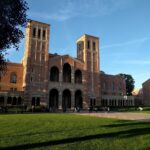Cuba Onstage, Castro Off
At the Modern Language Association’s “Cuba on Stage” panel in Chicago, which only had eleven people in attendance, (excluding the moderator and three panelists), Fidel Castro escaped criticism and mention by name from several art and music professors. David Lisenby of Albany-SUNY, Elena Valdez of Swarthmore College and Bretton White of Colby College, gave their presentations on Cuban music and art.
Lisenby focused on one Cuban playwright, Estorino, and how his play illustrated the plight of gay plays and art pieces. He said, “…the institutionalized homophobia of the performing arts” limited and handicapped Cuban plays in the 1970s and it affected generations of artistic Cubans. For example, Lisenby said that artists and performers were relegated and assigned “menial work” by the Cuban government as the arts became underappreciated. Yet Fidel Castro and those running the Cuban government escaped mention by Lisenby.
Elena Valdez’s presentation focused on fringe and underground music groups such as Las Krudas Cubensi (a lesbian rap group) and other reggaeton music artists. The Krudas group, along with most rappers, “claim to be a revolution within a revolution” as a “vocal form of political expression.” Valdez went on to say that the current status quo of Cuban women “relates to imperialism.”
These underground groups had done “particularly radical stunts against the Cuban government” and ended up creating, in Valdez’s opinion, “a mass-mediated public sphere” for discussion on current events. One such group called Aldea (or “The Villages”), was banned from performing after being interviewed by CNN in 2005 and 2009. They focus on legitimizing their voice, undermining state ideology and try action through confrontation.
Another group, called Porno Para Ricardo, sought out the “denouncement of communism and the regime” because the Castro government was not communist enough in their eyes. Yet, they like other underground music groups, are forced to use “transgressive performances to challenge the hegemony” of Cuba and its government.
Bretton White pointed out that one specific Cuban art piece in Havana. “Happily Ever After” (or Realidad), was an official government art exhibition and is a stretch of mirrors facing the Caribbean from a narrow walkway along Havana’s coastline. She explained the symbolism of it, having passersby reflect on what separates Havana from the world, or the sea. White said that it also helps people reflect on “detras del muro,” or what is behind the sea wall around Havana. She said that “Happily Ever After” allows visitors to imagine “a pattern of thought and action of getting through everyday space” and you can look at it “as a revolution of the utopian socialist” experiment in Cuba. White observed that the art piece “seems to mark the halfway point of limitlessness and seeing oneself” and “the mirror becomes a physical barrier between self and city.”




